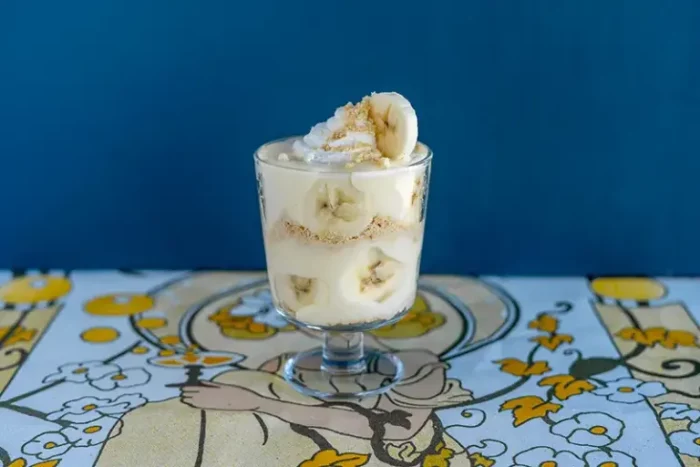Making a homemade red velvet cake might seem like a daunting task, but with the right ingredients and step-by-step guidance, you can achieve a beautiful, delicious cake that will impress your friends and family. This classic dessert is characterized by its vibrant red color, soft texture, and rich, velvety taste. Let’s dive into the process of creating this delightful treat.
Ingredients
Before we begin, ensure you have all the necessary ingredients. Here’s a comprehensive list:
For the Cake:
- Butter: 68 grams (softened)
- Granulated Sugar: 100 grams + 10 grams (for later use)
- Salt: 1/4 teaspoon
- Vanilla Extract: 1 teaspoon (or 1 drop of vanilla essence)
- Eggs: 75 grams (about 1 large egg)
- Buttermilk (half yogurt and half milk): 105 grams
- All-Purpose Flour (low-gluten flour): 140 grams
- Cocoa Powder: 10 grams
- Red Velvet Powder (or Red Food Coloring mixed with flour): 10 grams
- Baking Powder: 3 grams
- Baking Soda: 1 teaspoon
- White Vinegar: a little
- Water: 22 grams + 20 grams (for later use)
For the Cream Cheese Frosting:
- Cream Cheese: 200 grams (softened)
- Butter: 35 grams (softened)
- Powdered Sugar: 35 grams
- Heavy Whipping Cream: 80 grams
- Rum (optional): a little
Equipment
- Mixing bowls
- Electric mixer or whisk
- Measuring cups and spoons
- Sifter
- Spatula
- 6-inch round cake pan
- Parchment paper
- Cooling rack
- Piping bag and nozzle (optional for decoration)
Step-by-Step Instructions
Preheat the Oven and Prepare the Pan
Preheat your oven to 175°C (350°F). Line a 6-inch round cake pan with parchment paper and lightly grease it to prevent the cake from sticking.
Mix the Dry Ingredients
In a medium bowl, sift together the low-gluten flour, cocoa powder, red velvet powder (or red food coloring mixed with a bit of flour), and baking powder. This ensures that the dry ingredients are well combined and free of lumps.
Cream the Butter and Sugar
In a large mixing bowl, add the softened butter and 100 grams of granulated sugar. Use an electric mixer to cream the butter and sugar together until the mixture is light and fluffy, about 2-3 minutes. The butter should turn a pale yellow color.
Add the Eggs
Crack the egg into a separate bowl (to avoid shell fragments) and beat it lightly. Gradually add the beaten egg to the butter mixture, a little at a time, beating well after each addition. This ensures that the egg is fully incorporated and the mixture remains smooth.
Add Remaining Wet Ingredients
Add the vanilla extract, salt, and 22 grams of water to the butter mixture. Mix until well combined. Next, add the buttermilk (a mixture of yogurt and milk) in two additions, mixing until smooth after each addition. The mixture may look curdled, but this is normal and will come together when the dry ingredients are added.
Combine Wet and Dry Ingredients
Add one-third of the sifted dry ingredients to the wet mixture. Use a spatula to gently fold the ingredients together until just combined. Be careful not to overmix, as this can cause the cake to become dense. Add half of the remaining buttermilk and mix gently. Repeat with the remaining dry ingredients and buttermilk, mixing until just combined. The batter should be smooth, red, and have a glossy appearance.
Add Baking Soda and Vinegar
Sprinkle the baking soda and a little white vinegar over the batter. Quickly fold them in using a spatula. The vinegar will react with the baking soda, causing the batter to fizz slightly. This helps the cake rise and gives it a tender texture.
Pour the Batter into the Pan
Pour the batter into the prepared cake pan and spread it out evenly using a spatula. Tap the pan lightly on the counter to release any air bubbles.
Bake the Cake
Place the cake pan in the preheated oven and bake for 25-30 minutes, or until a toothpick inserted into the center of the cake comes out clean. The cake should have a domed top and spring back to the touch.
Cool the Cake
Remove the cake from the oven and let it cool in the pan for about 10 minutes. Run a knife around the edges to loosen the cake, then invert it onto a cooling rack to cool completely. Peel off the parchment paper.
If you plan to make a layered cake, you can level the top of the cake with a serrated knife to create a flat surface. Wrap the cake tightly in plastic wrap and place it in the freezer for about 15-20 minutes to firm up. This makes it easier to slice into even layers.
Make the Cream Cheese Frosting
While the cake is cooling, prepare the cream cheese frosting. In a large mixing bowl, add the softened cream cheese and butter. Use an electric mixer to beat them together until smooth and creamy. Gradually add the powdered sugar, beating on low speed to avoid a cloud of sugar. Once the sugar is incorporated, increase the speed to high and beat until the frosting is light and fluffy, about 2-3 minutes.
Add the heavy whipping cream and continue to beat until the frosting reaches your desired consistency. If you want a slight rum flavor, add a teaspoon or two of rum and mix well.
Slice the Cake (If Making Layers)
Once the cake is firm, remove it from the freezer and unwrap it. Use a serrated knife to slice the cake horizontally into two or three even layers. Place the layers on a piece of parchment paper or a clean work surface.
Assemble the Cake
Place the first cake layer on your serving plate or cake stand. Use an offset spatula or butter knife to spread a layer of cream cheese frosting over the top. Add the next cake layer and repeat the process, spreading frosting between each layer and on the top and sides of the cake.
If desired, you can pipe decorative swirls of frosting around the top edge of the cake using a piping bag and nozzle.
Decorate (Optional)
You can decorate the cake with various toppings such as sprinkles, edible glitter, fresh berries, or even crushed nuts. For a classic red velvet look, you can dust the top with a little powdered sugar or cocoa powder.
Tips for Success
Measure Ingredients Accurately: Baking is a science, and accuracy is key. Always measure your ingredients using the correct methods (spoon and level for dry ingredients, liquid measuring cups for liquids).
Room Temperature Ingredients: Make sure your butter, eggs, and cream cheese are at room temperature before you start. This ensures they mix together smoothly and creates a softer cake texture.
Don’t Overmix: Once you add the dry ingredients to the wet ingredients, mix until just combined. Overmixing can cause the cake to become dense and tough.
Use Quality Ingredients: Investing in good-quality ingredients will make a noticeable difference in the taste and texture of your cake.
Patience with Frosting: Cream cheese frosting can be a bit tricky to work with because it softens quickly at room temperature. If it becomes too soft, place the mixing bowl in the refrigerator for a few minutes to firm up before continuing.
Conclusion
Making a homemade red velvet cake may seem like a challenge, but with the right ingredients and careful attention to detail, you can create a beautiful and delicious dessert that will impress everyone. The vibrant red color, soft texture, and rich flavor of red velvet cake make it a perfect choice for any celebration or special occasion.
Remember to enjoy the process and take pride in your baking skills. With practice, you’ll become more confident in the kitchen and be able to tackle even more complex recipes. So, gather your ingredients, preheat your oven, and get ready to bake a stunning red velvet cake that will be the highlight of your next gathering. Happy baking!
Related Topics:
























